These sweets are a traditional Christmastime dessert in Naples. They are small balls of fried dough that are dipped in honey and sprinkled with decorative candies. At your holiday table, this struffoli platter will steal the show!
Prep time: 2 hours (this is a fun recipe for 2 or more people to make together)
Serves: 10 to 12
Ingredients:
1 to 2 tablespoons semolina (for flouring)
3 large eggs
1 tablespoon sugar
zest of 1 unwaxed lemon, finely grated
1 tablespoon vegetable oil (for the batter)
1-1/2 to 2 cups flour, plus a little more for rolling
¼ teaspoon baking powder
1 to 1½ quarts vegetable oil, preferably sunflower or safflower (for frying)
1-1/2 cups spun honey (16-ounce container)
2 teaspoons non-pareils candies, for decoration
Mix and Form the Dough:
1. Line a baking sheet with parchment paper; sprinkle the sheet with semolina and set aside.
2. Line another sheet or platter with double paper towels (this will be used to drain the fried struffoli); set aside.
3. In a mixing bowl, beat together the eggs, lemon zest and 1 tablespoon oil until mixture is uniform.
4. Gradually (a little at a time) add about 1-1/2 cups flour and baking powder to form a dough.
5. If dough is too sticky, add about 1 to 2 tablespoons more flour until the dough is formed and pliable. It should be smooth.
6. Take the dough out of the bowl and place it on a lightly-floured surface.
7. You will barely have to knead the dough, coating it with a LIGHT amount of flour until it no longer sticks to your hands.
Shape the Struffoli:
1. Tear off a marble-sized piece of dough and roll it with your hands.
2. Set the ball aside on the lightly-floured parchment sheet on baking dish.
3. Repeat rolling instructions until all the dough has been rolled into marble-sized balls.
Fry the Struffoli:
1.Heat 1 quart oil in a wide, heavy pan or saucepot at 375°F (the oil should be 6 inches deep).
2. Gently lower about 12 dough balls at a time into the hot oil. They will first sink and then, as they cook, they will float up to the surface and begin to turn golden brown.
3. Make sure to roll them around with a slotted spoon so that they do not burn underneath and instead, evenly turn light golden brown. THIS WILL TAKE LESS THAN A MINUTE. NOTE: Struffoli should not blacken.
4. When struffoli are light golden brown, immediately transfer them to the paper towel-lined sheet or platter.
5. Continue frying the struffoli in batches, making sure to control the heat if it is too high or too low.
Coat the Struffoli with Warm Honey:
1. Place a serving platter close to you on a counter; set aside.
2. Transfer the spun honey into a 2 to 4-quart saucepot.
3. Add 1/3 cup cold water to the honey in saucepot and warm up the mixture.
4. When the honey mixture begins to bubble and foam, add a slotted spoonful of struffoli to the honey.
5. Immediately STIR GENTLY ONCE as you lift out the struffoli from the warm honey.
NOTE: MAKE SURE THE HONEY DOES NOT BUBBLE UP AND OUT OF THE SAUCEPOT – CONTROL THE HEAT SETTING ON LOW.
6. Let them drip slightly over the honey pot and quickly transfer them to center of platter.
7. Work quickly to repeat coating the struffoli, lifting and draining them and then transferring struffoli to the platter – SHAPE THE MOUND OF STRUFFOLI INTO A CONE OR PYRAMID.
8. When all struffoli have been set on platter, immediately sprinkle them with the non-pareils candies.
9. Set platter of struffoli aside until ready to serve.
10. If you need to cover struffoli, lightly oil a sheet of plastic wrap and set it over the platter.
Text and Photograph ©2015 Nancy DeLucia Real










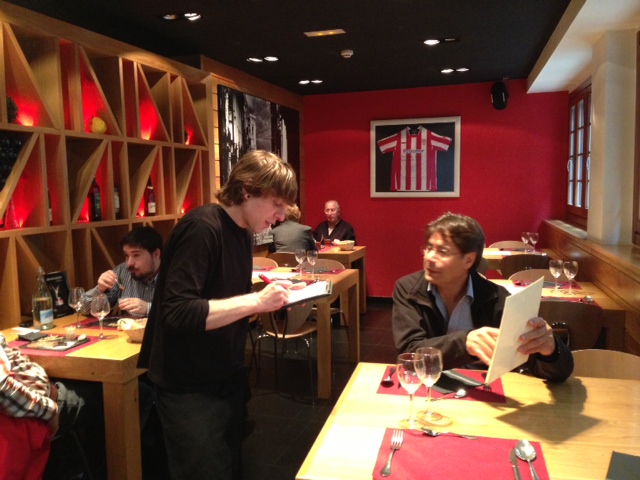
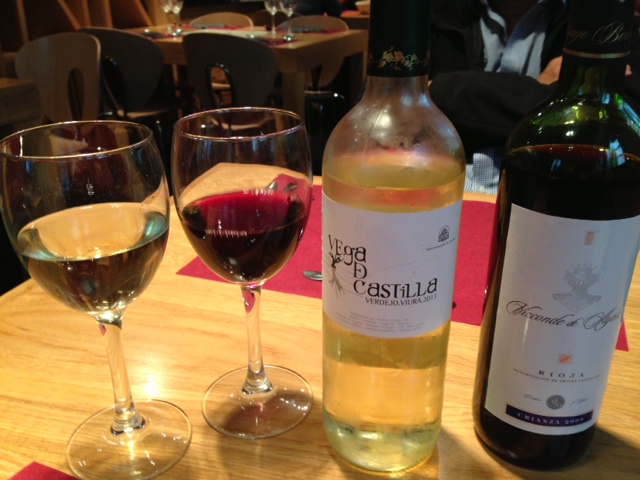
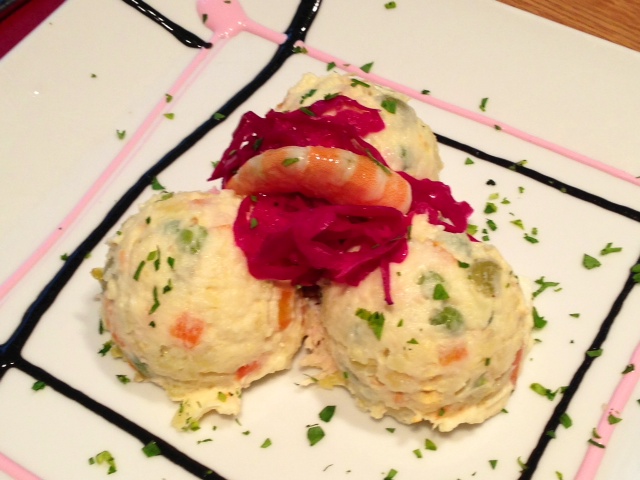
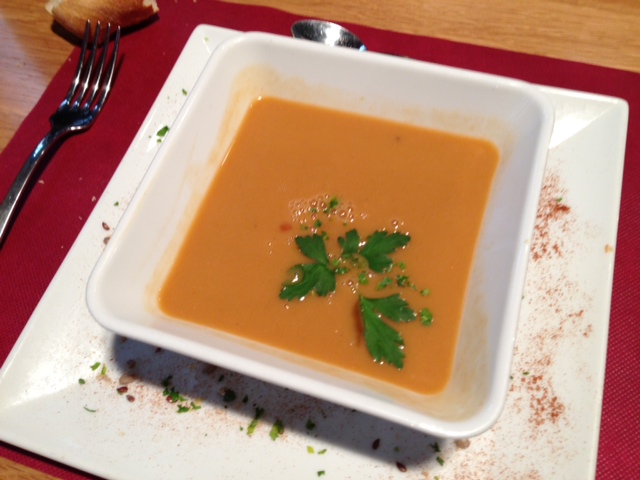


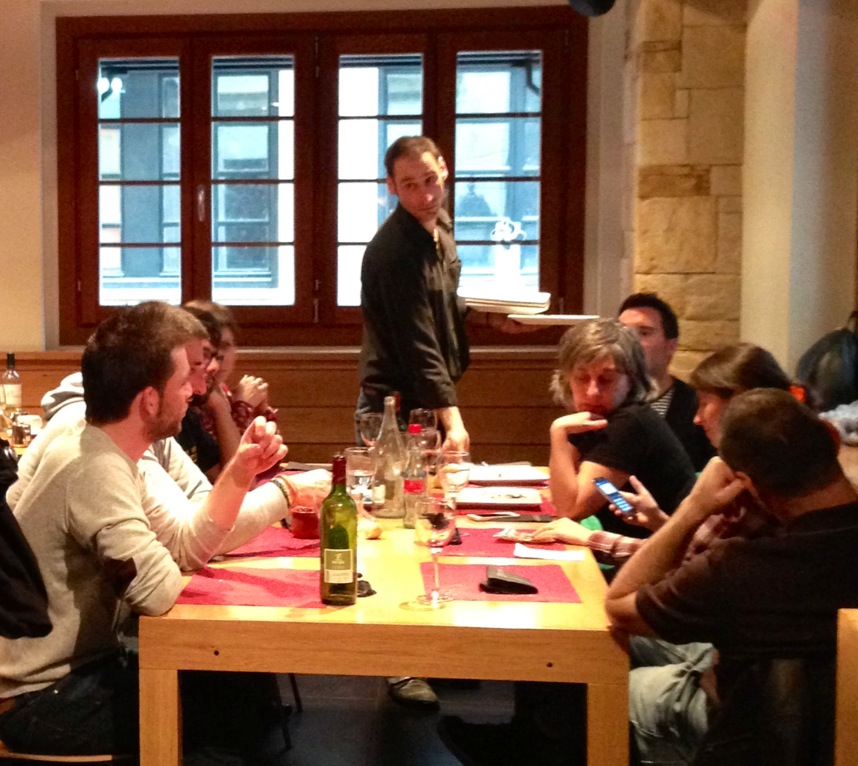




 Nancy DeLucia Real is an art historian and chef. She has led culinary courses at the Italian Cultural Institute, The Getty Center and The Getty Villa and is a former member of the Culinary Historians of Southern California. Nancy's gastronomy training took place in the heart of Italy under the tutelage of her grandmother. She has taught international cuisine at Williams Sonoma and Sur la Table Stores. Nancy's art history & culinary courses are ongoing at various institutions. She also teaches private cooking classes.
Nancy DeLucia Real is an art historian and chef. She has led culinary courses at the Italian Cultural Institute, The Getty Center and The Getty Villa and is a former member of the Culinary Historians of Southern California. Nancy's gastronomy training took place in the heart of Italy under the tutelage of her grandmother. She has taught international cuisine at Williams Sonoma and Sur la Table Stores. Nancy's art history & culinary courses are ongoing at various institutions. She also teaches private cooking classes. 

